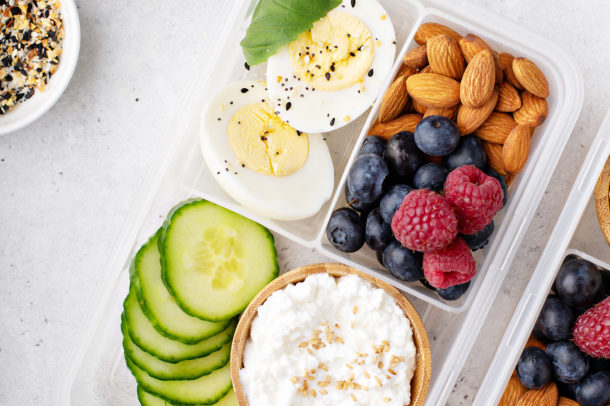Submitted by Hanna Kim, Dietetics Student and Dani Renouf, RD MSC, CDE
Snacking is such an important part of a healthy diet, and especially valuable when you are balancing chronic health conditions such as kidney disease and diabetes.
Oftentimes, people are uncertain of what to choose for snacks, and worry that snacking will lead to undesirable weight gain. However, snacking can actually help improve nutrition status, balance blood sugars, and result in better portion control at meals.
How do you create a snack with simple math? Follow these easy steps below.
The Snack Formula: [fruits/vegetables] + OR [starch] + [protein] = a nutritious snack!
From the food groups, choose 1-2 options from each column and mix and match as desired!
| Fruit and Vegetable Group | Starch Group | Protein Group |
| Fruit (size of a tennis ball) | Low sodium whole grain crackers | ¼ cup hummus |
| 1 Cup up vegetables | 1 piece of whole grain toast | 1 cup yogurt |
| 1 cup Vegetable soup | ⅓ cup cooked brown rice | ½ cup Canned plain beans or lentils (drained and rinsed) |
| 1 cup Cabbage salad Crunchy Asian Coleslaw – Kidney Community Kitchen | 2 cups popcorn Sugar and Spice Popcorn – Kidney Community Kitchen | ¼ cup Canned tuna/salmon (drained and rinsed) |
Snack Math Examples
1 fruit + 1 cup yogurt = morning snack
OR
1 cup vegetables + ¼ cup hummus = afternoon snack
OR
6 crackers + ¼ can tuna = evening snack
You can also use leftovers like 1 cup vegetable soup, OR ⅓ cup leftover cooked rice, OR 1 cup leftover salad + ¼ cup canned beans/lentils
When should I include a snack?
If you are leaving more than 6 hours of a gap between your meals, we suggest that you include a snack at the 4 hour mark. For example, if you eat lunch at 12pm, and dinner at 6pm, include a snack at about 4pm.
Healthy dips are a great way to increase vegetables in your diet.
Try the Roasted Red Pepper Dip with Crackers below:
